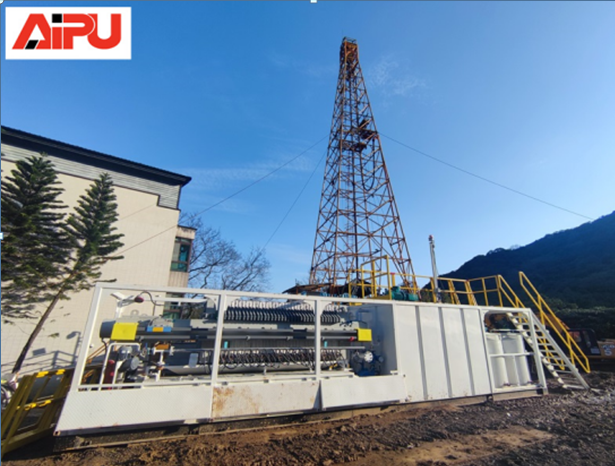Empowering Challenging Drilling Operations
Solids control systems are indeed a vital component in drilling operations. These systems play a crucial role in maintaining the efficiency and safety of the entire drilling process.
Function of Solids Control Systems
The primary function of solids control systems is to separate the drilled cuttings and other solid particles from the drilling fluid, also known as mud. During drilling, large amounts of solid debris are generated. If these solids are not removed, they can cause significant problems. For example, excessive solids in the drilling fluid can increase its viscosity, which in turn requires more energy to pump the fluid. This not only leads to higher operational costs but also reduces the overall efficiency of the drilling rig. By effectively removing the solids, the system helps to maintain the proper properties of the drilling fluid, ensuring smooth and efficient drilling.
Components of Solids Control Systems
Solids control systems typically consist of several key components. The first is the shale shaker, which is the initial stage of solids removal. It uses a vibrating screen to separate the larger cuttings from the drilling fluid. Next is the desander, which removes medium - sized particles through a hydrocyclone process. The desilter, similar to the desander, is designed to remove even smaller particles. Additionally, a centrifuge is often used as the final stage of solids control. It can separate extremely fine particles from the drilling fluid, further improving its quality.
Benefits of Using Solids Control Systems
There are numerous benefits to using solids control systems. Firstly, they help to extend the life of the drilling equipment. When the drilling fluid contains fewer solids, there is less wear and tear on the pumps, pipes, and other components of the drilling rig. This reduces the frequency of equipment maintenance and replacement, saving both time and money. Secondly, these systems contribute to environmental protection. By properly managing the solid waste generated during drilling, they prevent the release of harmful substances into the environment. Moreover, efficient solids control can improve the quality of the wellbore, leading to better oil and gas production.
Challenges and Future Developments
However, solids control systems also face some challenges. One of the main challenges is dealing with different types of drilling fluids and cuttings. Different formations produce cuttings with varying sizes and properties, which requires the system to be flexible and adaptable. In the future, there is a trend towards the development of more advanced and automated solids control systems. These systems will be able to adjust their operation parameters in real - time based on the characteristics of the drilling fluid and cuttings, further improving the efficiency and effectiveness of solids control in drilling operations.

Function of Solids Control Systems
The primary function of solids control systems is to separate the drilled cuttings and other solid particles from the drilling fluid, also known as mud. During drilling, large amounts of solid debris are generated. If these solids are not removed, they can cause significant problems. For example, excessive solids in the drilling fluid can increase its viscosity, which in turn requires more energy to pump the fluid. This not only leads to higher operational costs but also reduces the overall efficiency of the drilling rig. By effectively removing the solids, the system helps to maintain the proper properties of the drilling fluid, ensuring smooth and efficient drilling.
Components of Solids Control Systems
Solids control systems typically consist of several key components. The first is the shale shaker, which is the initial stage of solids removal. It uses a vibrating screen to separate the larger cuttings from the drilling fluid. Next is the desander, which removes medium - sized particles through a hydrocyclone process. The desilter, similar to the desander, is designed to remove even smaller particles. Additionally, a centrifuge is often used as the final stage of solids control. It can separate extremely fine particles from the drilling fluid, further improving its quality.
Benefits of Using Solids Control Systems
There are numerous benefits to using solids control systems. Firstly, they help to extend the life of the drilling equipment. When the drilling fluid contains fewer solids, there is less wear and tear on the pumps, pipes, and other components of the drilling rig. This reduces the frequency of equipment maintenance and replacement, saving both time and money. Secondly, these systems contribute to environmental protection. By properly managing the solid waste generated during drilling, they prevent the release of harmful substances into the environment. Moreover, efficient solids control can improve the quality of the wellbore, leading to better oil and gas production.
Challenges and Future Developments
However, solids control systems also face some challenges. One of the main challenges is dealing with different types of drilling fluids and cuttings. Different formations produce cuttings with varying sizes and properties, which requires the system to be flexible and adaptable. In the future, there is a trend towards the development of more advanced and automated solids control systems. These systems will be able to adjust their operation parameters in real - time based on the characteristics of the drilling fluid and cuttings, further improving the efficiency and effectiveness of solids control in drilling operations.








